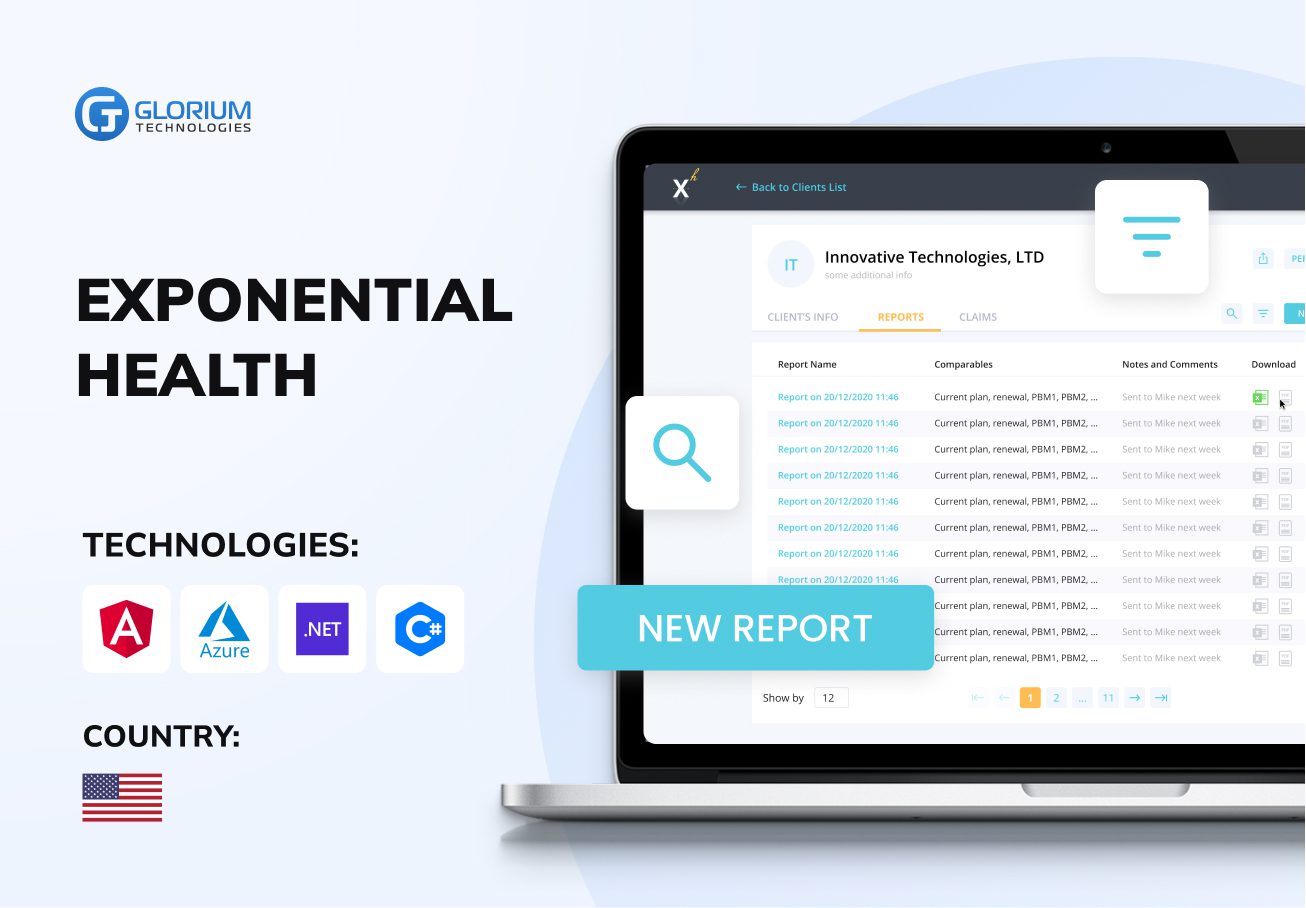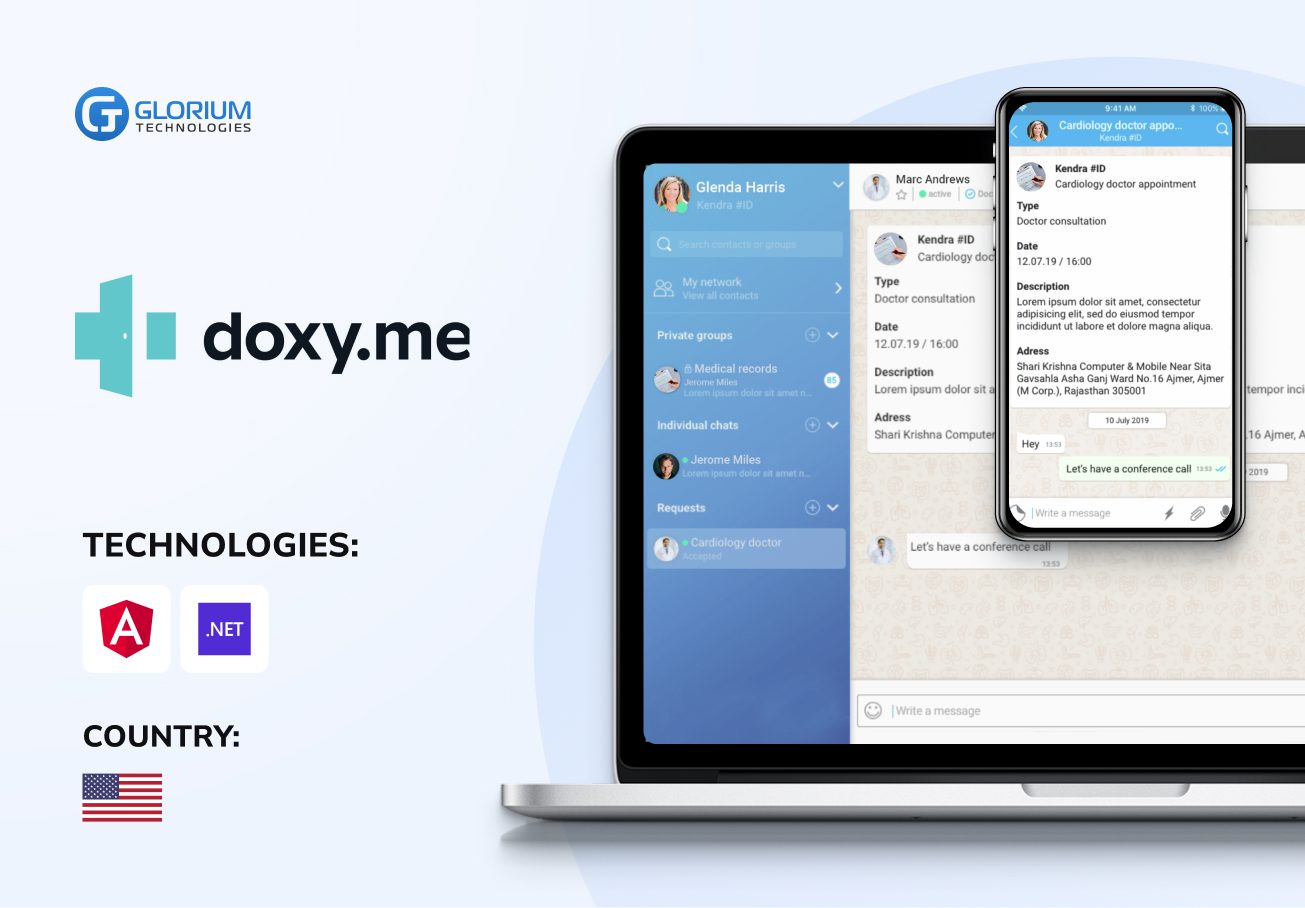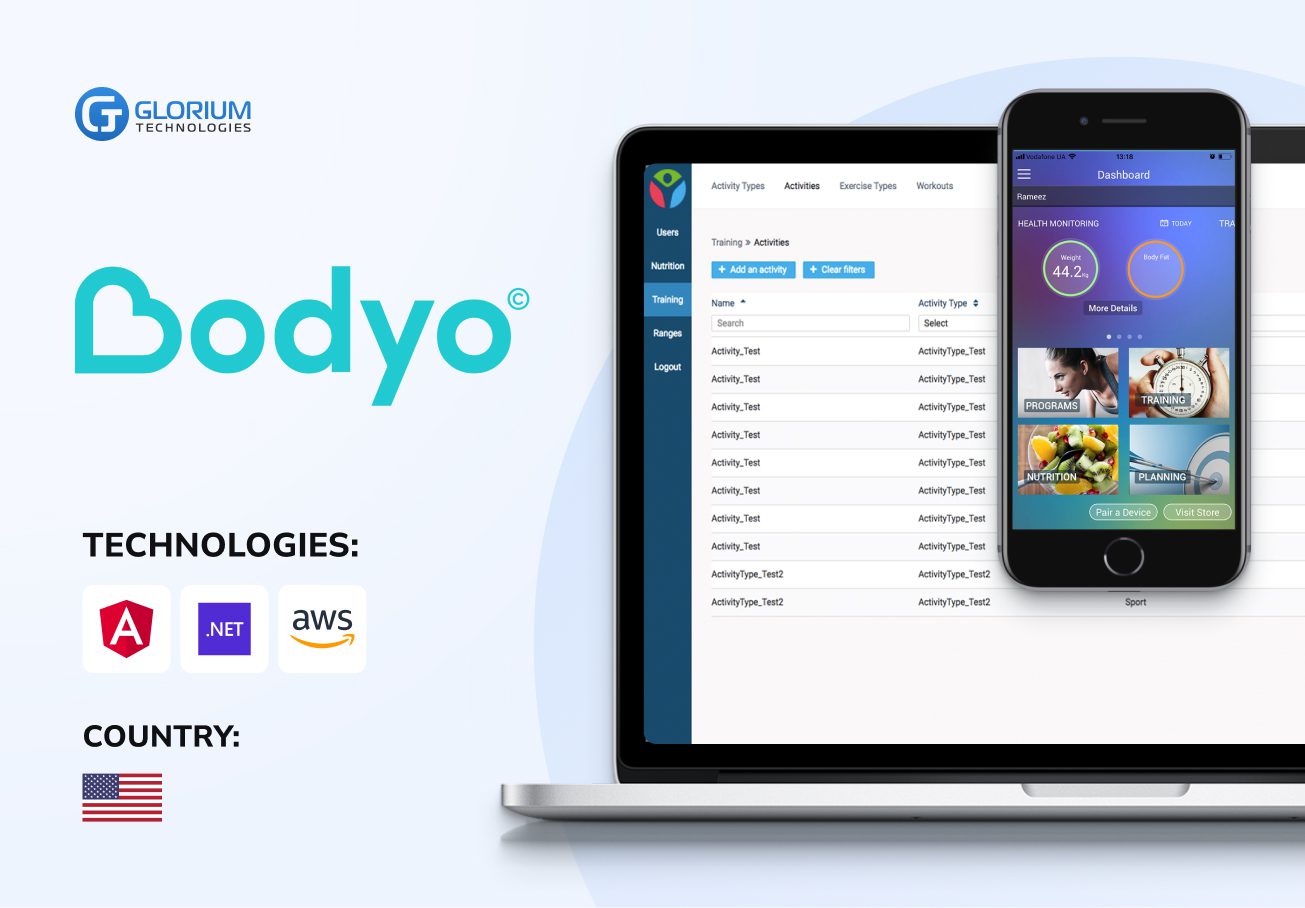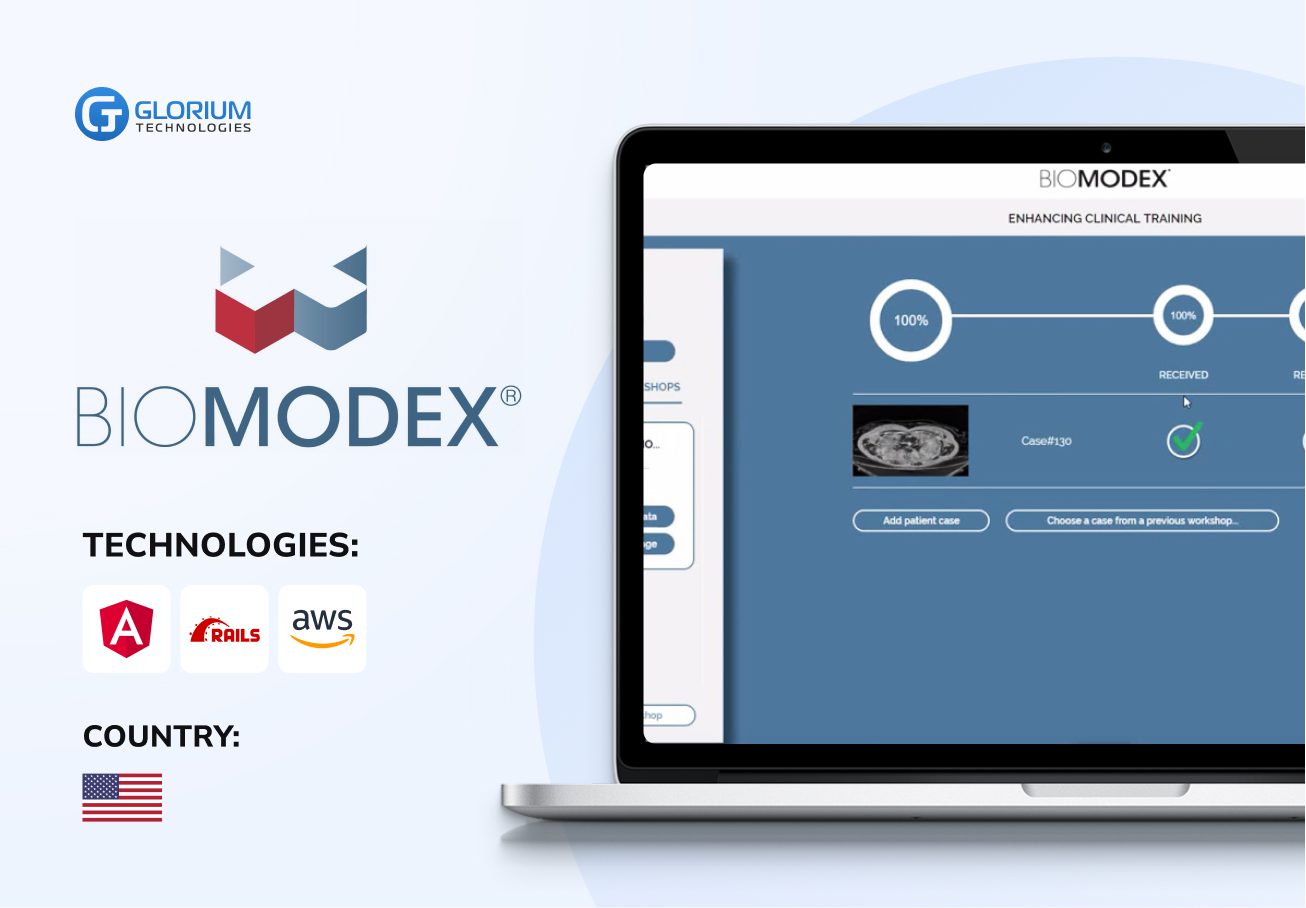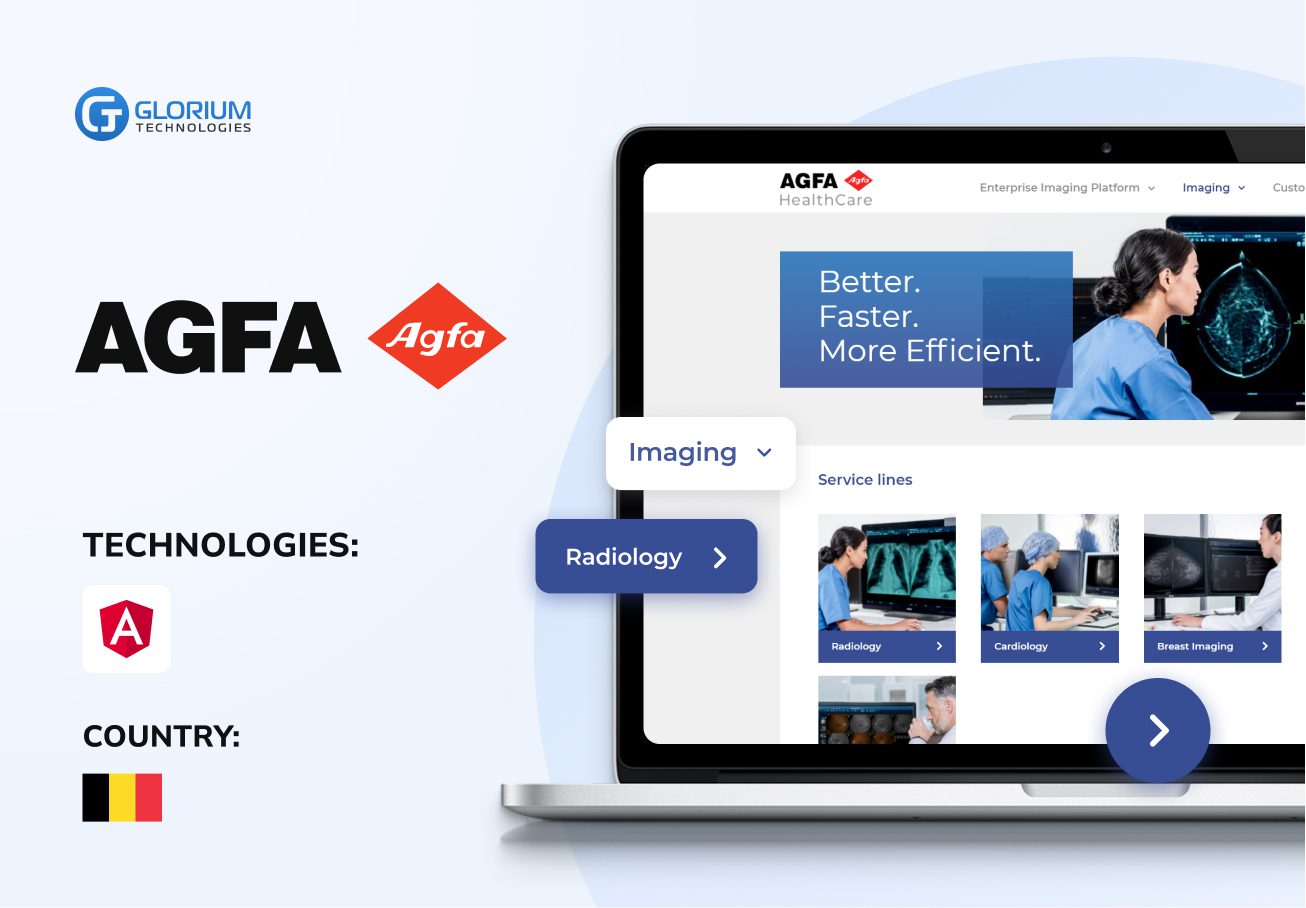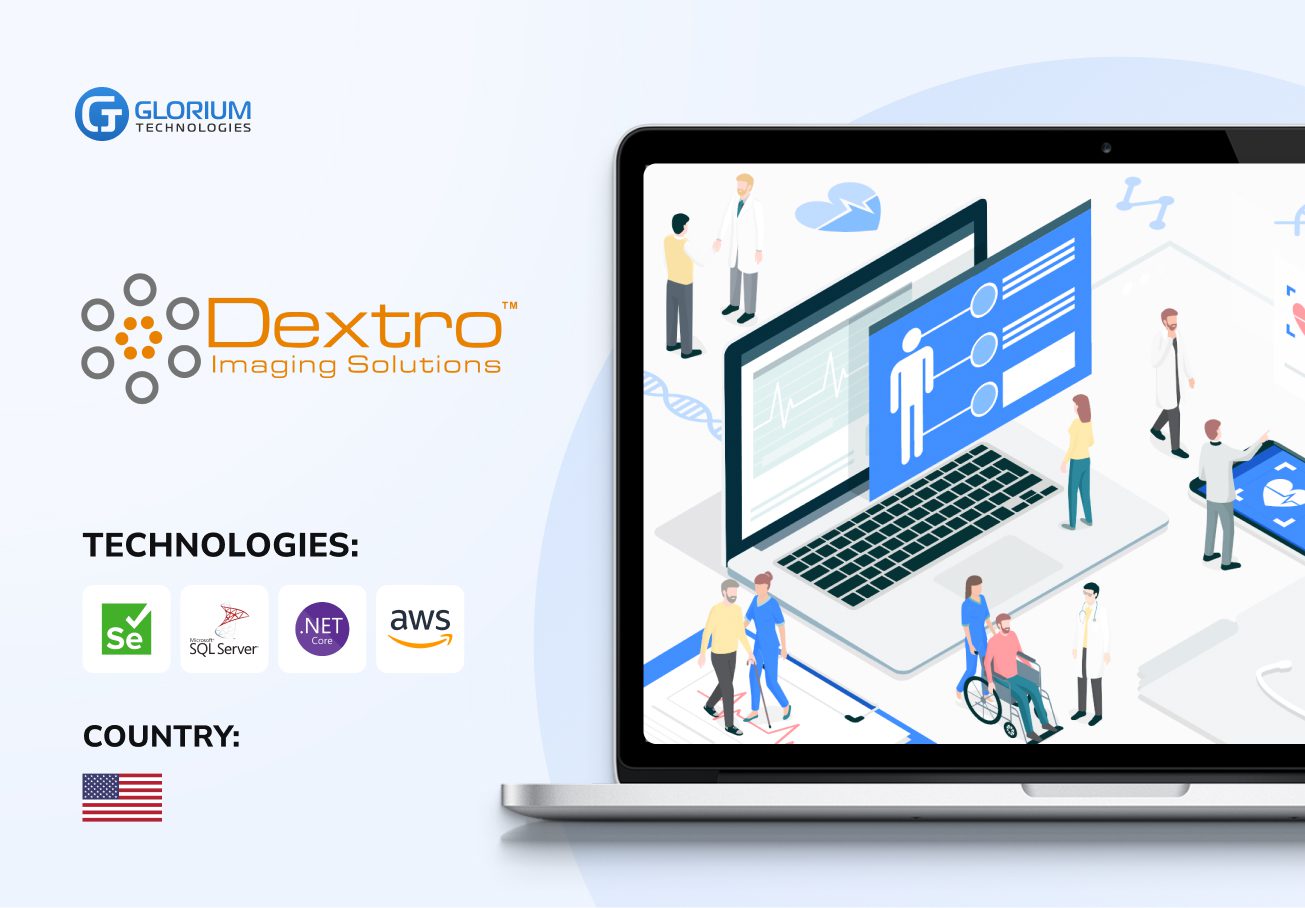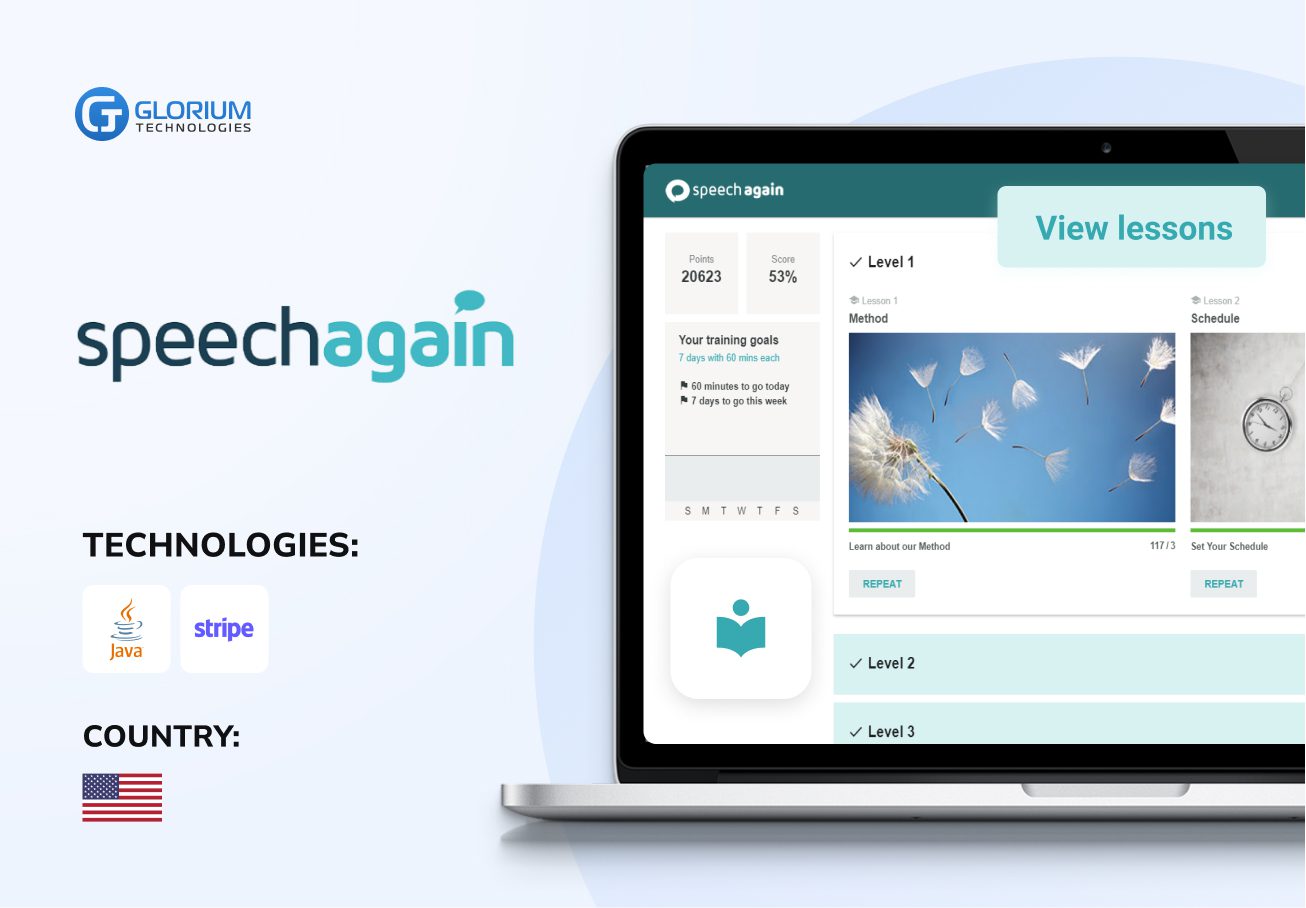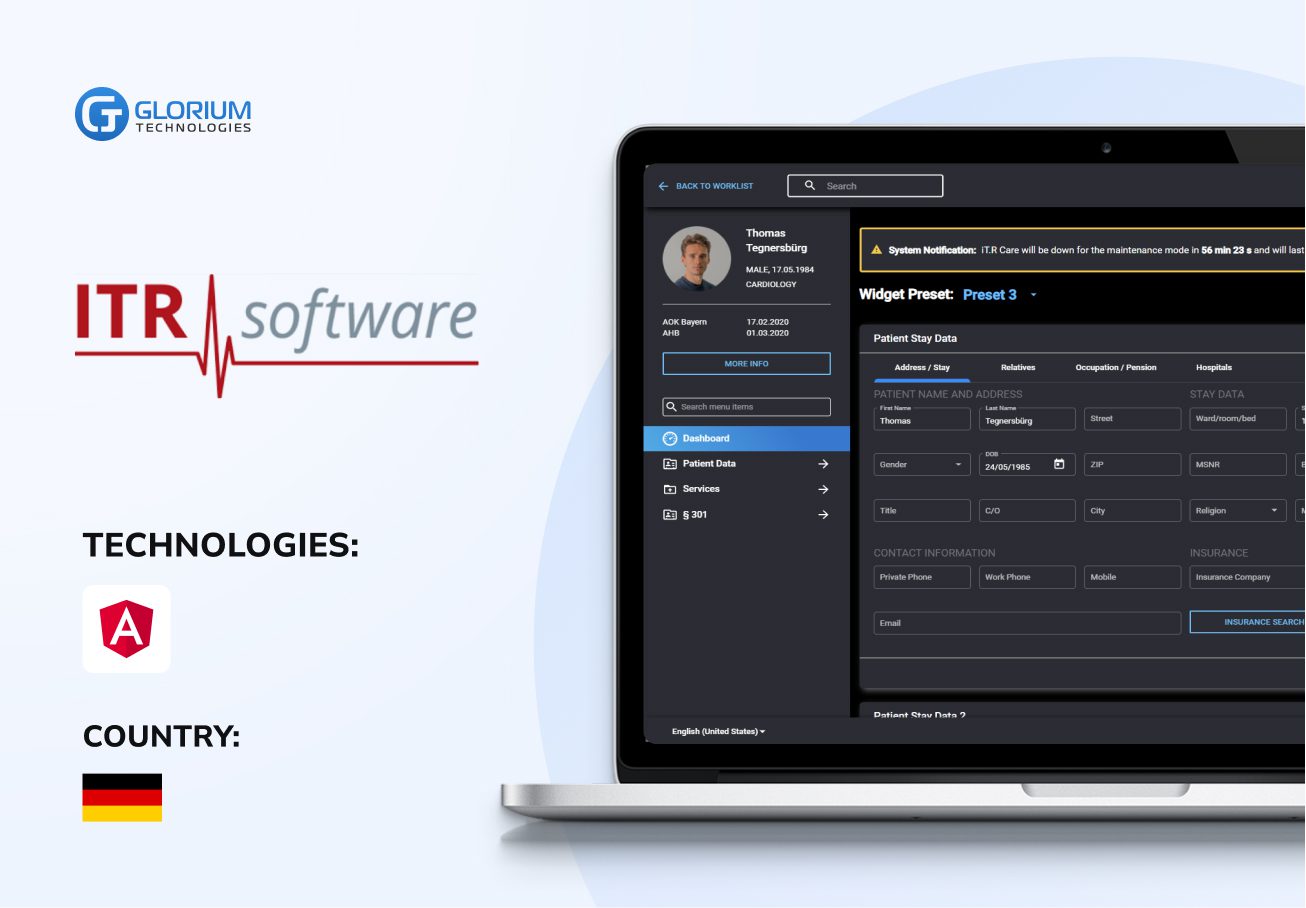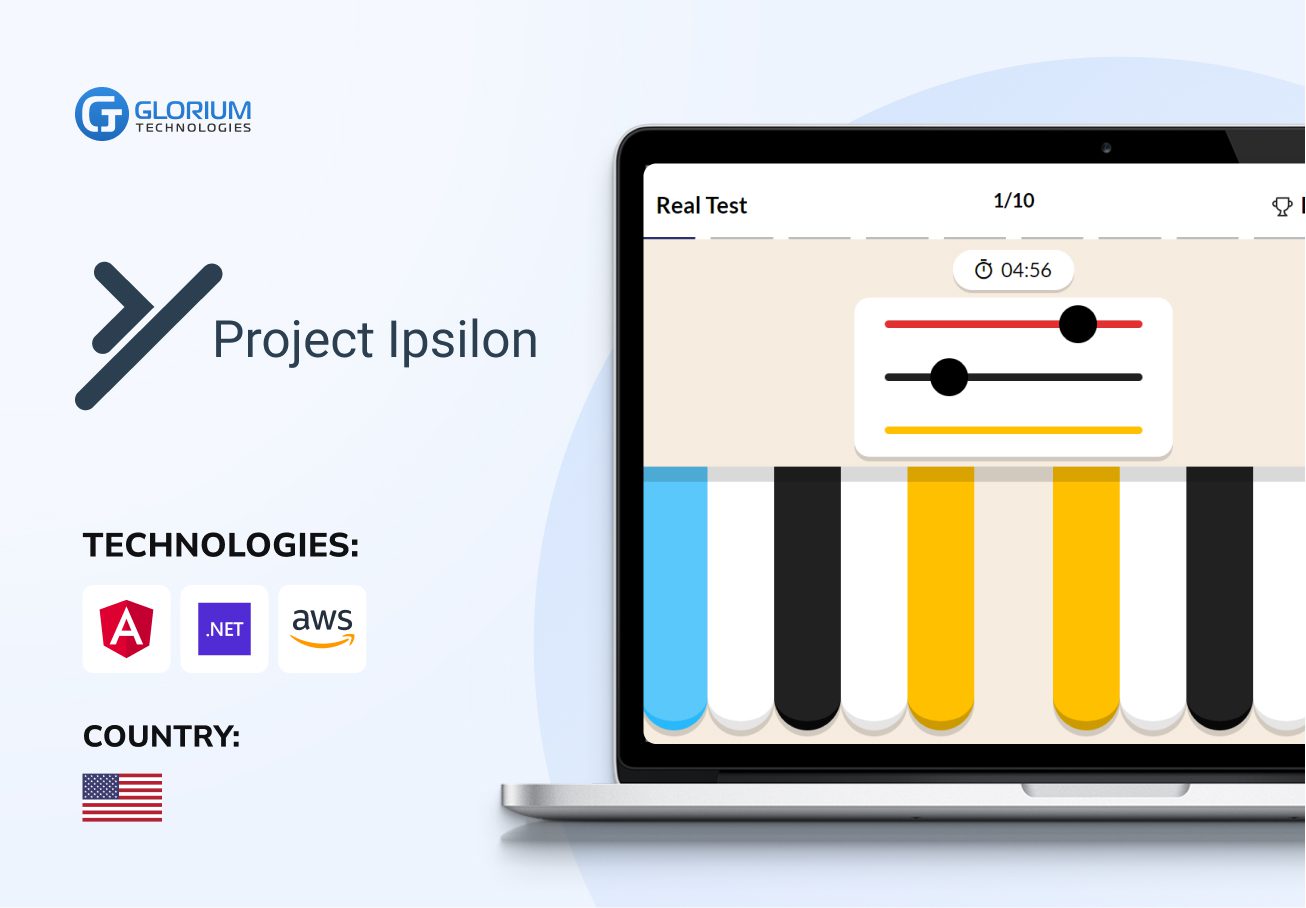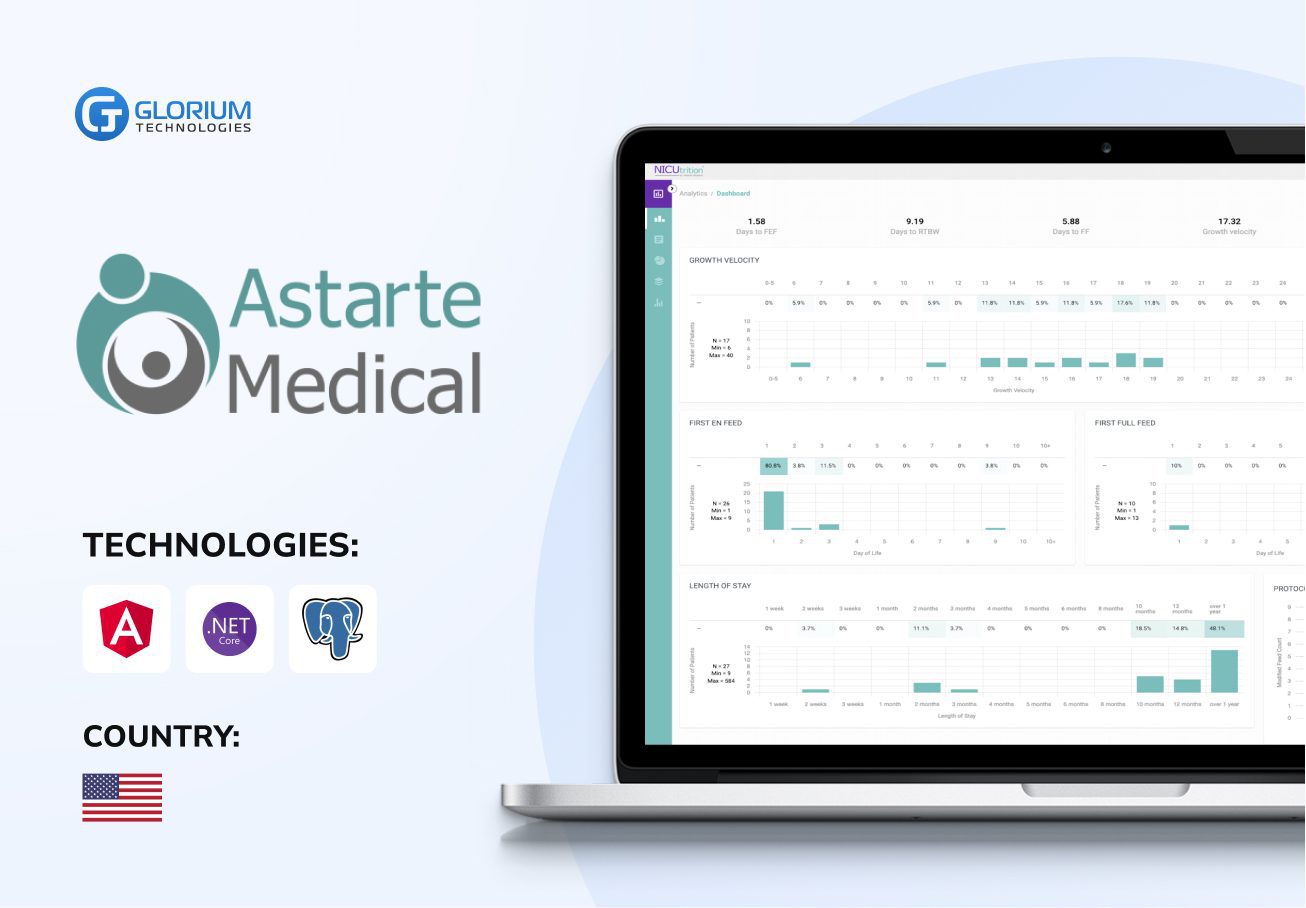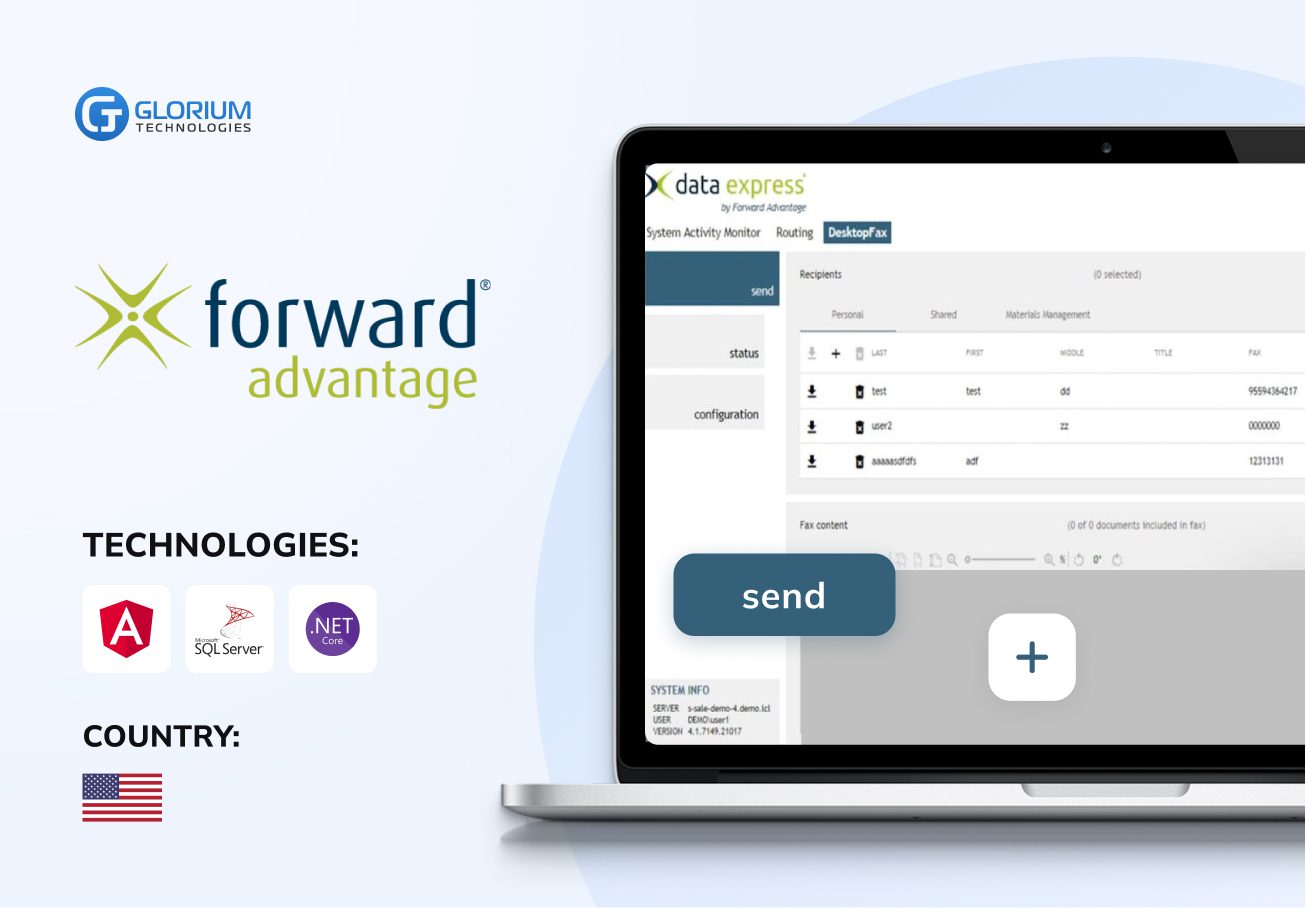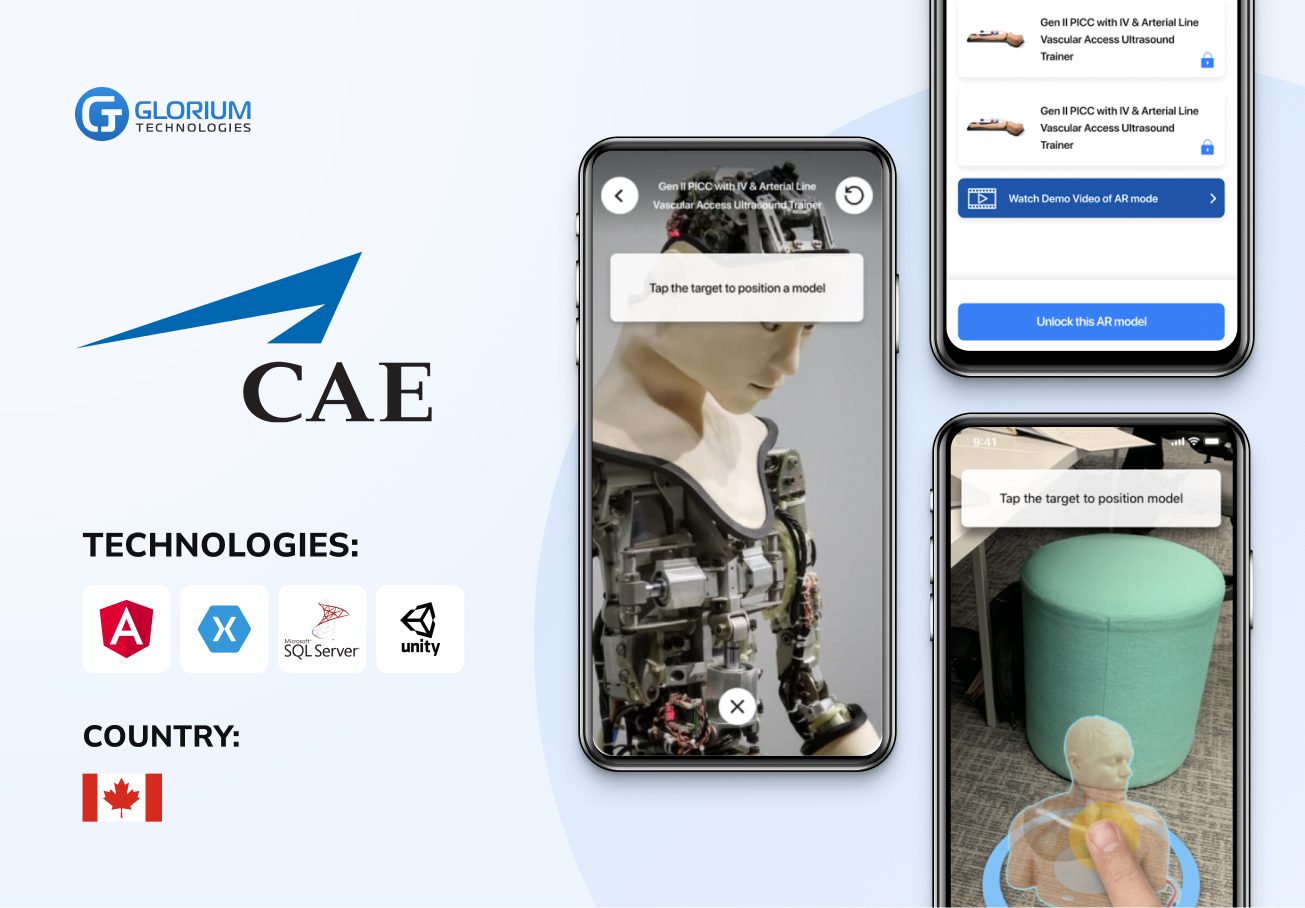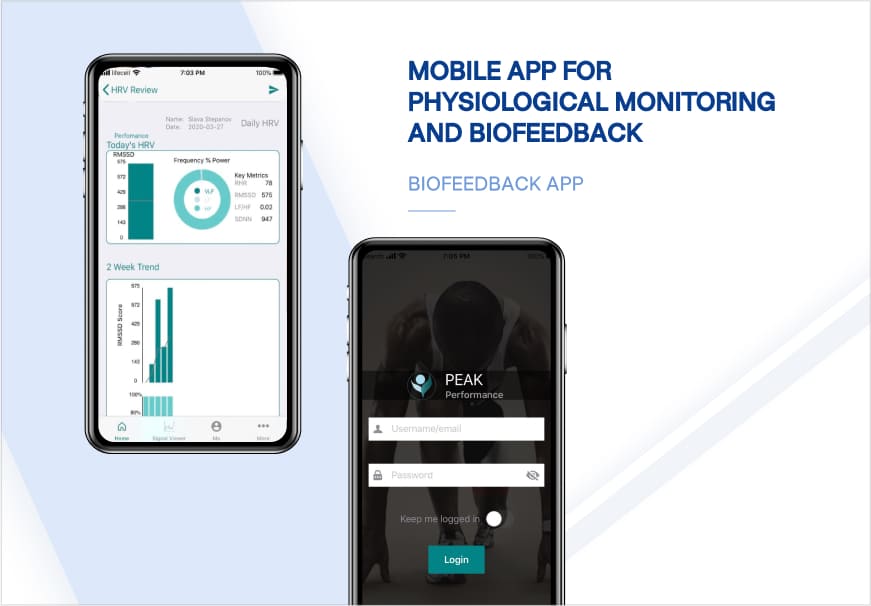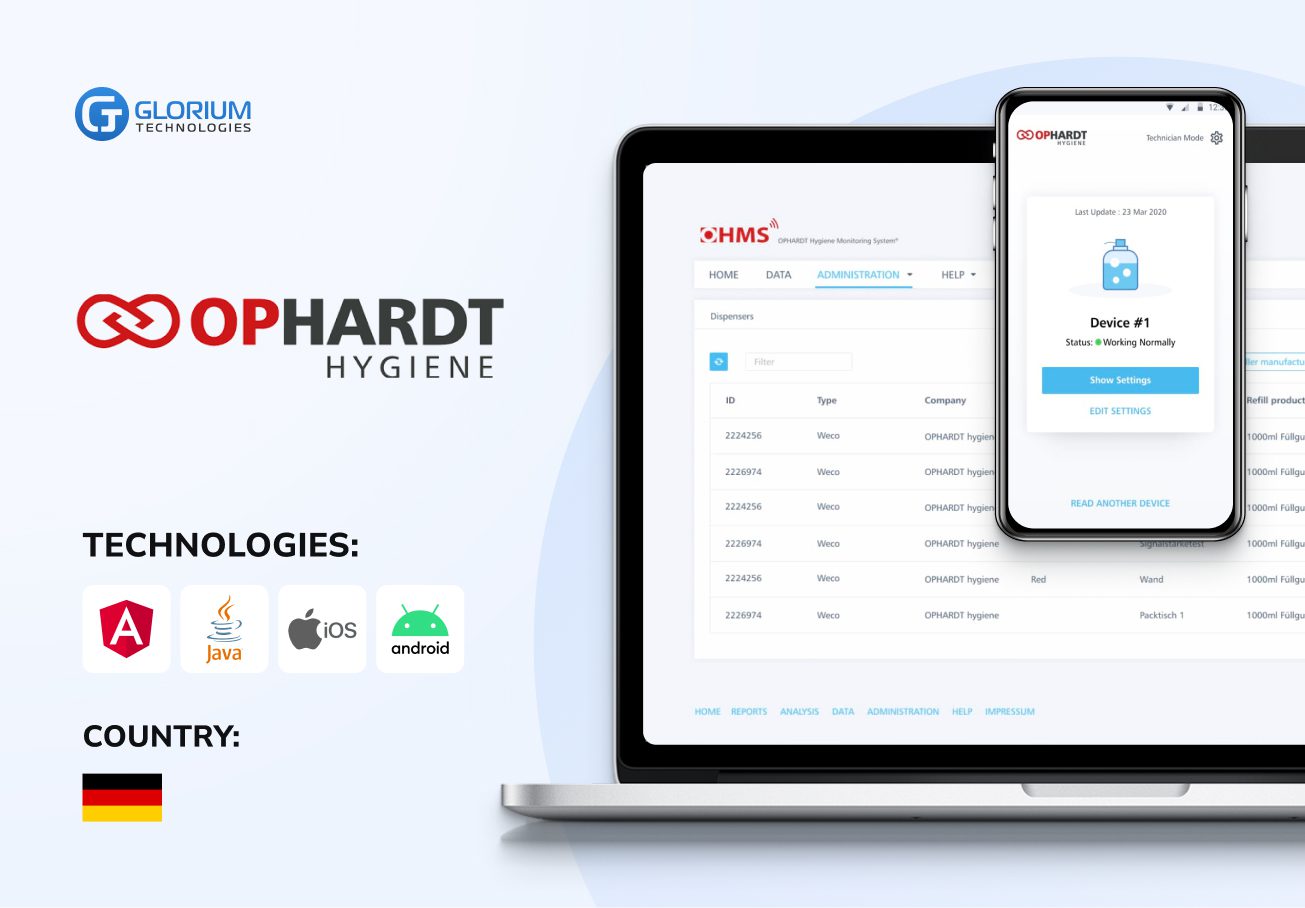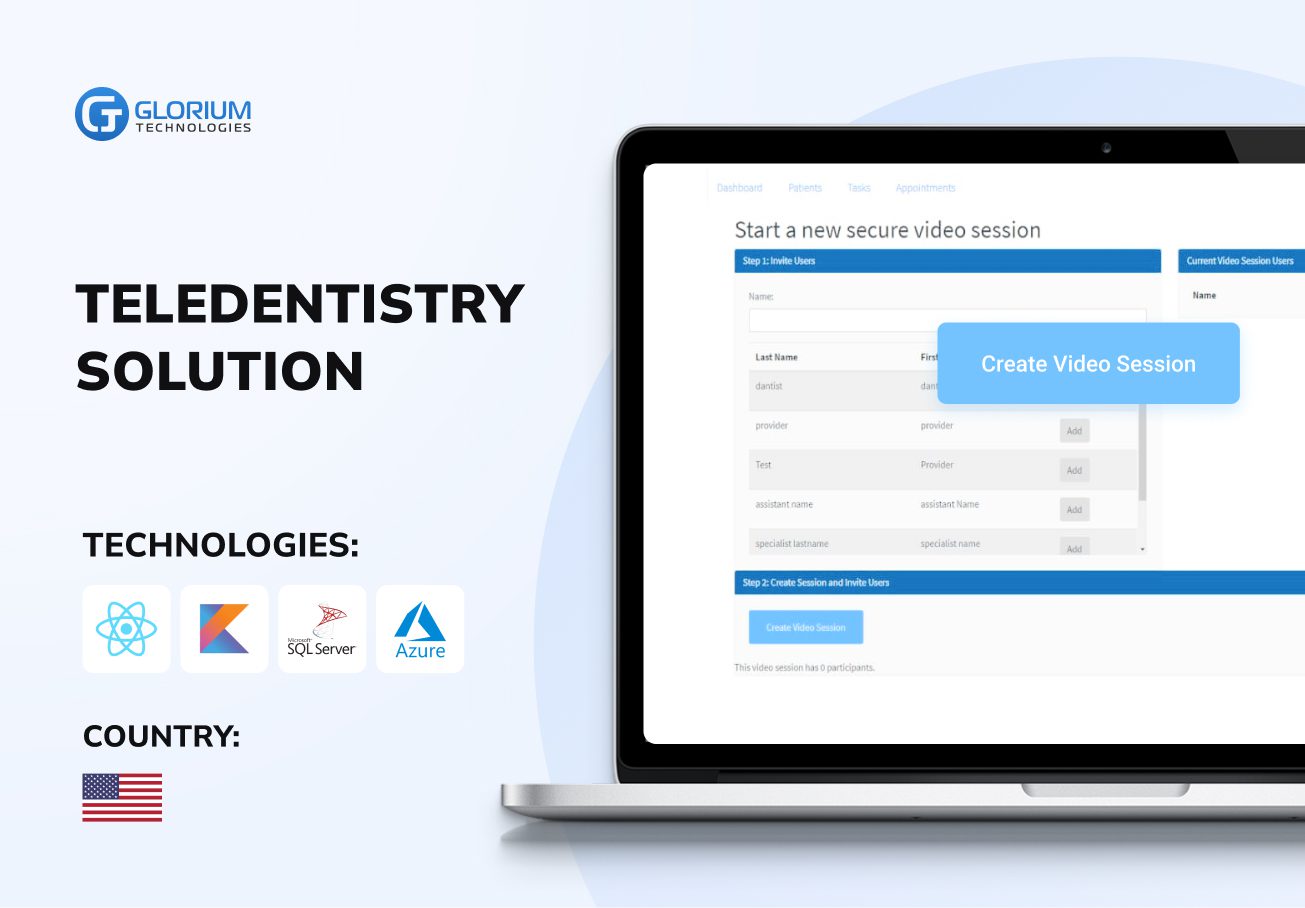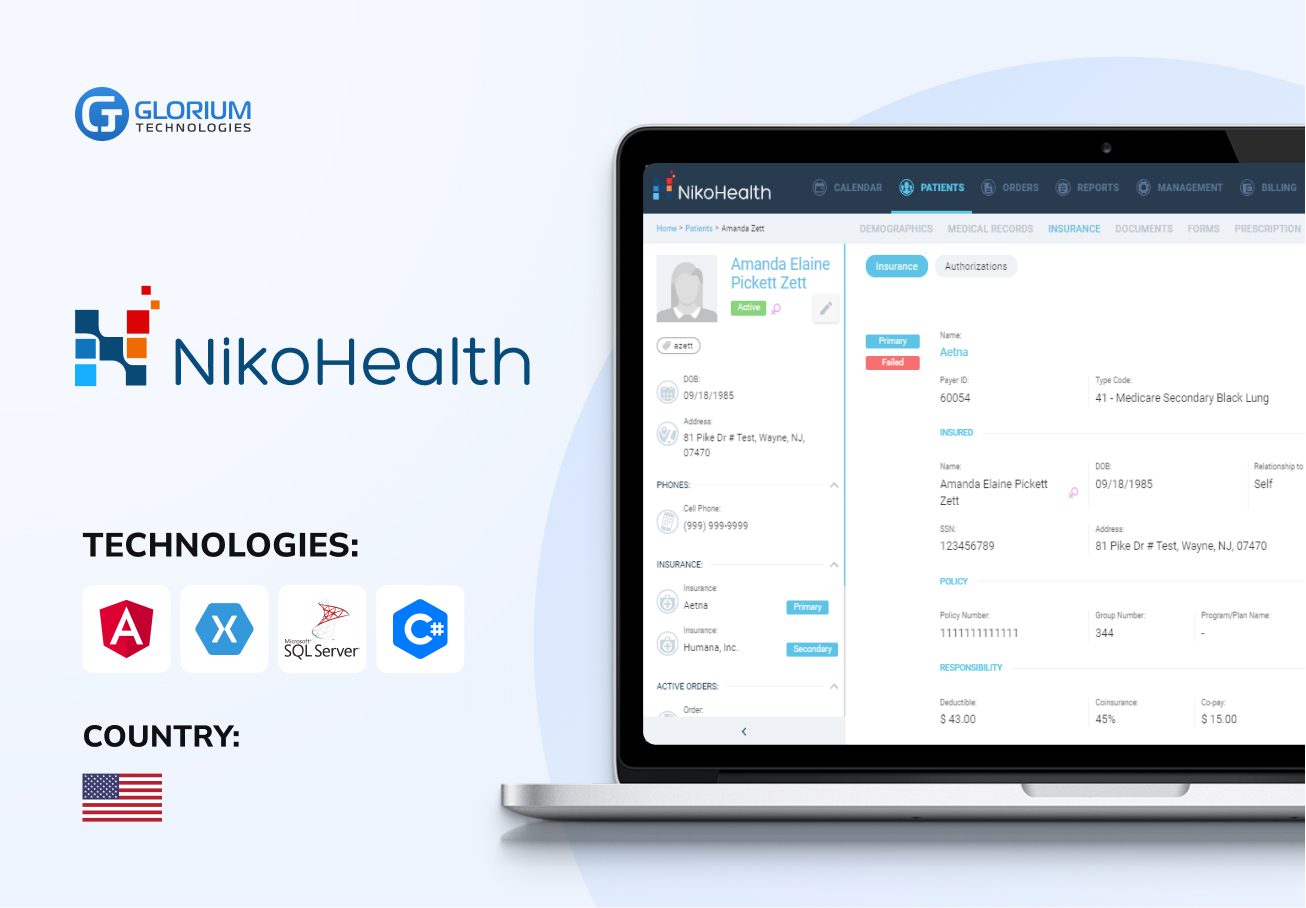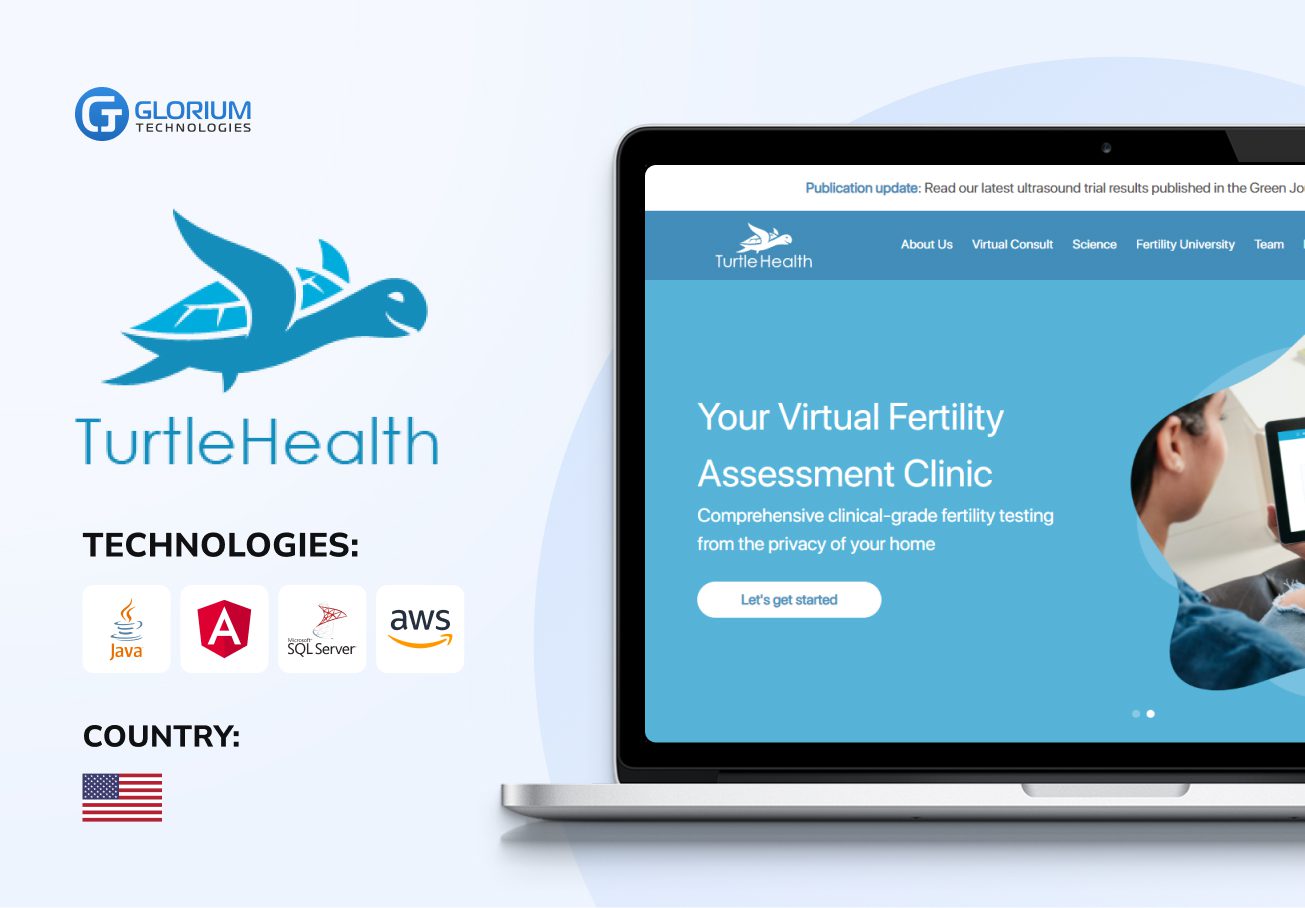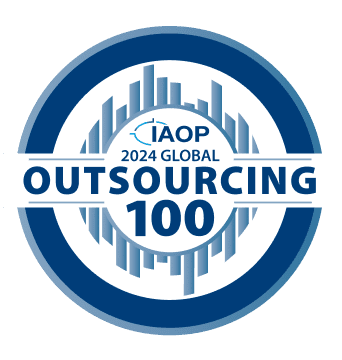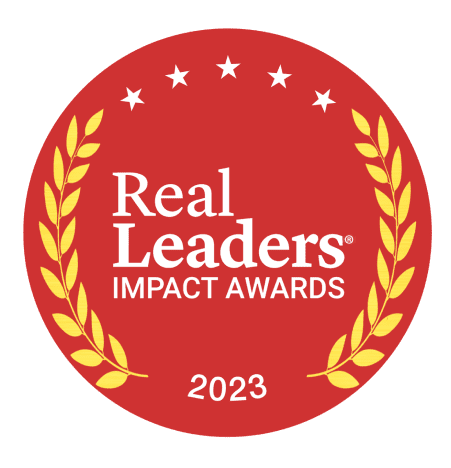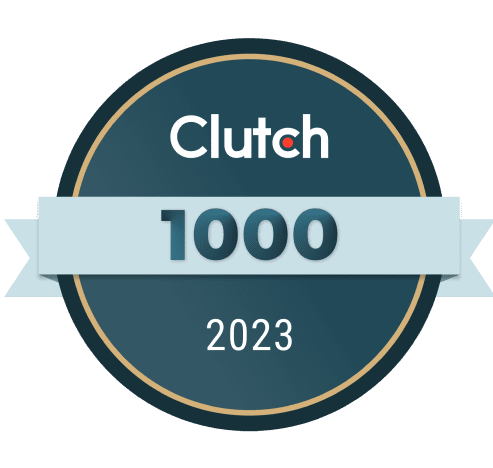Medical Imaging Software Development
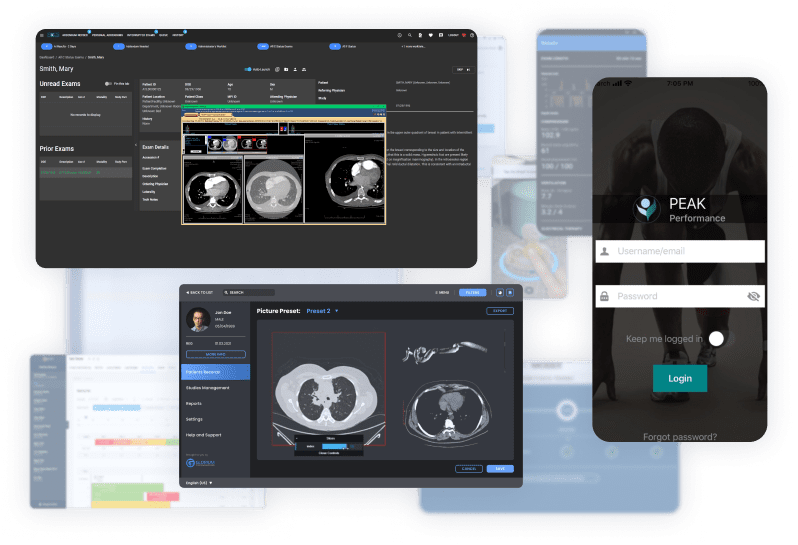

Ensuring the security of medical imaging data, including patient information and medical images, can be a challenging task.
We prioritize the confidentiality and privacy of medical imaging data to comply with regulatory standards, such as HIPAA, and safeguard against unauthorized access, theft, and breaches.
Startups may need help finding and hiring skilled talents with expertise in medical imaging software development.
Whether you need assistance in building an imaging system from scratch or optimizing an existing software solution, our team, with over 12 years of expertise, can provide the necessary skills and knowledge to help you achieve your needs.
Integrating multiple data sources, including medical images, patient information, and electronic medical records, can be a complex task in medical imaging software development.
It requires robust APIs, detailed data mapping, and solid data validation to ensure seamless and accurate data integration and to enable healthcare providers to make informed decisions based on reliable information.
Medical Imaging Solution Types We Develop
No matter what you need to develop for your healthcare business, our medical imaging software development company provides tailored solutions based on your requirements.
We create solutions which allow healthcare providers to digitally view, manipulate, and analyze medical images, enabling more accurate diagnoses and treatment decisions.
With advanced visualization tools and interactive features, healthcare providers can zoom, pan, measure, annotate, and apply various image processing techniques to enhance image quality and extract valuable insights.
Our team enables the storage, retrieval, and distribution of medical images and related data, providing healthcare providers with a centralized repository for all medical imaging data.
With robust data security measures and compliance with regulatory standards, our PACS solutions prioritize the confidentiality and privacy of patient information.
Build a cutting-edge medical imaging solution using machine learning algorithms to analyze medical images and make more accurate diagnoses.
We offer custom AI diagnosis software that enhances diagnostic capabilities, provides more efficient medical care, and increases workflows.
By utilizing advanced machine learning algorithms and other technologies, our MRI software solutions can help healthcare providers make more accurate diagnoses, reduce diagnostic errors, and improve overall patient outcomes.
To improve efficiency and diagnostic accuracy, we closely collaborate with our clients throughout the medical software development process.
Our ultrasound processing software is designed to provide healthcare providers with a powerful tool to produce high-quality images to diagnose and treat various medical conditions.
Ensure that ultrasound processing software is tailored to your needs, maximizing efficiency and improving overall patient care services.
Our tomography solution is a specialized medical imaging software that enables healthcare providers to produce high-resolution images of internal structures using various tomography techniques such as CT, PET, and SPECT.
Glorium consistently enhances and updates our software development processes to align with the latest medical imaging trends and changes.
What Makes Us Pros in Medical Imaging Software Development?
Medical Imaging Areas of Applications
Dentistry is a specialized area of medical imaging that uses technology to diagnose and treat dental conditions.
Medical software development in dentistry may include digital X-ray imaging, computed tomography (CT) scans, cone-beam CT scans, 3D imaging and other orthodontics software technologies.
Orthopedics is a specialized area of medical imaging that involves the use of imaging technology to diagnose and treat conditions related to the musculoskeletal system.
Medical imaging software solutions in orthopedics may include X-ray imaging, computed tomography (CT) scans, magnetic resonance imaging (MRI), and ultrasound imaging.
Neurology is a specialized area of medical imaging that involves imaging technology to diagnose and treat conditions related to the brain and nervous system.
Medical imaging software solutions in neurology may include magnetic resonance imaging (MRI), computed tomography (CT) scans, positron emission tomography (PET) scans, and functional magnetic resonance imaging (fMRI).
Cardiology is a specialized area of medical imaging involving imaging technology to diagnose and treat heart and cardiovascular system conditions.
Medical imaging software solutions in cardiology may include echocardiography, magnetic resonance imaging (MRI), computed tomography (CT) scans, and positron emission tomography (PET) scans.
Oncology is a specialized medical imaging area involving imaging technology to diagnose and treat cancer and other related conditions.
Medical imaging software solutions in oncology may include magnetic resonance imaging (MRI), computed tomography (CT) scans, positron emission tomography (PET) scans, and ultrasound imaging.
Manage the workflow of radiology departments, or create radiosurgery and teleradiology solutions. Choose unique features such as image-guided targeting, automated treatment planning, and real-time monitoring of treatment efficacy to improve outcomes.
Creating such solutions, Glorium can help streamline the radiology workflow, improve efficiency, and ensure compliance with healthcare standards.
Pulmonology is a specialized area of medical imaging that involves using imaging technology to diagnose and treat conditions related to the lungs and respiratory system.
Medical imaging software solutions in pulmonology may include X-ray imaging, computed tomography (CT) scans, magnetic resonance imaging (MRI), and positron emission tomography (PET) scans.
Mammography is a specialized area of medical imaging involving X-ray technology to diagnose and screen for breast cancer.
Medical imaging software solutions in mammography may include digital mammography, tomosynthesis, and breast magnetic resonance imaging (MRI).
Must-have Medical Imaging Features We Create
Medical imaging software with advanced image acquisition capabilities can produce high-resolution images that aid healthcare providers in providing more accurate diagnoses and developing more effective treatment plans.
Our company’s expertise in developing medical imaging software with robust image acquisition capabilities ensures that you receive a solution that provides high-quality images for accurate diagnoses and efficient workflow management, ultimately leading to improved patient outcomes and enhanced healthcare services.
Make more accurate diagnoses and develop more effective treatment plans, ultimately leading to improved patient outcomes. The Glorium team offers a variety of algorithms and techniques, such as contrast stretching, noise reduction, and edge detection, to improve the clarity, detail, and overall quality of images.
With our focus on quality and compliance with industry regulations, you can trust that medical imaging software solutions will provide advanced features, efficient workflow management, and ultimately, improved patient outcomes.
Image analysis is a crucial feature of medical imaging software that helps healthcare providers to extract useful information from digital medical images by using machine learning, artificial intelligence, and deep learning technologies.
Our team of experts has the necessary skills and knowledge to design and implement advanced image analysis features that meet the unique needs of our clients in the healthcare industry.
This feature is particularly important for medical imaging modalities that are highly sensitive to image quality, such as mammography and radiology.
Our medical imaging software with advanced image quality improvement features is designed to provide healthcare professionals with the clarity and accuracy they need to make informed decisions and provide the best possible patient care.
The Glorium medical imaging software provides a powerful and user-friendly interface that makes it easy for healthcare professionals to segment images accurately and efficiently. Our algorithms and techniques are designed to optimize the segmentation process, ensuring that the segmented regions are accurate and precise.
We offer integration with other medical imaging applications, enabling a seamless workflow and reducing the time and resources required for image analysis.
Our medical imaging software provides a comprehensive and robust image registration tool that allows healthcare professionals to align multiple images accurately and efficiently. The Glorium team utilizes advanced algorithms and techniques to ensure accurate registration, regardless of the imaging modality or the type of images being registered.
Get all benefits from our extensive experience in developing image registration solutions for various medical applications.
Our medical imaging software provides advanced image fusion capabilities that allow for the integration of images from various modalities, including CT, MRI, PET, and SPECT.
Our software utilizes advanced algorithms and techniques to ensure accurate and seamless image fusion, enabling healthcare professionals to obtain a more complete understanding of a patient’s condition.
We offer advanced 4D fusion capabilities that allow for the integration of images taken at different times, enabling healthcare professionals to obtain a comprehensive view of a patient’s condition over time.
Our software utilizes advanced algorithms and techniques to ensure accurate and seamless 4D fusion, improving diagnostic accuracy and patient outcomes.
Ensure objective and quantitative measurements, which can aid in diagnosis, treatment planning, and monitoring of disease progression
Our medical imaging software offers advanced quantification tools that are designed to be highly accurate and efficient, enabling healthcare professionals to obtain precise and consistent measurements.
With our medical imaging software, users can generate 3D models from 2D images using advanced reconstruction algorithms. This allows clinicians to visualize the internal structures of organs and tissues in three dimensions, which can aid in diagnosis, treatment planning, and surgical interventions.
Our software offers advanced image processing techniques to improve image quality, enhance contrast, and reduce noise, enabling users to obtain highly precise and accurate measurements.
Our software is designed to seamlessly integrate with leading PACS and EHR platforms, enabling healthcare providers to easily access and share patient data and medical images across multiple systems.
Improve workflow efficiency and reduce the risk of errors and duplication of effort.With our PACS and EHR integration, healthcare professionals can quickly retrieve patient information and medical images, view them side-by-side, and make more informed diagnostic decisions.
We design software with strong data security measures, including data encryption and access controls, to safeguard patient data and protect against unauthorized access or breaches. Additionally, our software complies with industry regulations and standards, such as HIPAA and GDPR, to ensure patient privacy and confidentiality.
Our team regularly updates our software to meet the latest regulatory requirements and stay up-to-date with emerging security threats.
Data Formats
DICOM (Digital Imaging and Communications in Medicine) is the standard format for medical imaging data in medical imaging software.
DICOM allows medical images to be stored, exchanged, and processed across healthcare information systems, ensuring consistency and compatibility between devices and software solutions.
TIFF (Tagged Image File Format) is a widely used format capable of storing high-resolution medical images, such as X-rays, CT scans, and MRI scans, in a lossless format.
TIFF files can be easily viewed and manipulated by medical imaging software applications and can be easily converted into other formats, such as DICOM if needed.
MINC (Medical Imaging NetCDF) is a format that allows medical imaging data to be stored in a hierarchical structure, enabling easy navigation and manipulation of complex datasets.
MINC files include metadata that provides essential information about the imaging data, such as patient information, imaging parameters, and image dimensions.
NIfTI (Neuroimaging Informatics Technology Initiative) is a flexible format that allows medical imaging data to be stored in a compact, binary format, enabling efficient storage and processing of large datasets.
NIfTI is an open standard format that can be easily integrated into medical imaging software applications across different systems and platforms.
ECAT7 (Emory/Concorde Acquisition and Transfer Protocol 7) is a data format commonly used in medical imaging software applications, particularly nuclear medicine.
ECAT7 is a binary format that stores medical imaging data acquired from positron emission tomography (PET) scanners.
Interfile is particularly useful for storing and analyzing SPECT and PET imaging data in nuclear medicine applications due to its ability to store multiple data sets in a single file.
Interfile provides a format for medical imaging that facilitates easy navigation, making it a preferred choice in the field of nuclear medicine.
JPEG (Joint Photographic Experts Group) is an image format used in many medical imaging software applications, particularly for storing and transmitting medical images in a compressed format.
JPEG can be useful for applications with limited storage space, as it can compress image files to a smaller size while maintaining relatively high image quality.
PNG (Portable Network Graphics) is a lossless image format, meaning that it does not compress the image data in a way that results in the loss of image detail or quality.
PNG is also able to store transparent images, which can be useful in certain medical imaging applications where it is necessary to view multiple layers of images.
BMP (Bitmap) is less commonly used due to its large file size and lack of compression options, which can make them difficult to transmit and store.
BMP files may be useful in certain medical imaging applications, such as high-resolution images or specialized imaging modalities.
MRC (Medical Research Council) is a data format mainly used for electron microscopy data.
MRC is a flexible and hierarchical format that stores multiple images, each with various planes or sections.
RAW files directly contain uncompressed and unprocessed image data from the imaging sensor, providing the highest image quality and detail.
While RAW files may be larger and require more storage space, they are often preferred in medical imaging software solutions where accuracy and flexibility in image processing are critical, such as in diagnostic radiology or digital pathology.
HDF5 provides a hierarchical structure that supports various types of data, including numerical data, images, and metadata, making it suitable for storing diverse medical imaging data.
One of the key advantages of HDF5 is its ability to handle large datasets and facilitate efficient data access. It enables data compression, chunking, and parallel I/O, which improve performance and reduce storage requirements.
Our Certifications
With over a decade of experience in medical imaging software development, we prioritize the safety and compliance of the custom solutions we deliver to clients across different locations, ensuring they adhere to industry regulations.
- Industry-wide standards including HIPAA, HL7&FHIR, and GDPR must be followed.
- ISO 9001 certification for Quality Management
- ISO 13485 certification for Quality Management for Medical Devices
- ISO 27001 certification for Information Security Management System.
Why Delegate Your Medical Imaging Software Development to Us?
Our developers possess extensive expertise in healthcare software development services, allowing us to create customized solutions.
Our solution adheres to privacy rules, and we conduct annual compliance standard verifications to mitigate any potential liabilities that may arise.
Our scalable technological stack for medical billing software development provides the flexibility to meet the unique needs of any business.
Obtain a comprehensive package that includes web and mobile applications, customized to meet your specific workflow requirements.
Explore
As a healthcare software development company, we conduct a thorough study to identify pain points and opportunities for telehealth solutions.
Craft Solution
After the analytics stage, our team of experts works closely with clients to craft a solution that is up-to-date, effective, and user-friendly but also secure, and compliant with industry regulations.
Prototype
Prototyping allows both the clients and the team to test the software’s functionality, user interface, and overall user experience before making meaningful decisions and investing in the full development process.
Build and Test
After receiving the customer’s go-ahead on the prototype, our team will immediately start developing and testing the medical billing software tools that are considered to be the highest industry standards.
Execution
We implement the software solution and provide continuous support to guarantee it meets our clients’ increasing demands and regulatory standards.
Ongoing Assistance
We provide our clients with continuous support, such as training, maintenance, and upgrades, to guarantee that the software continues to work properly and meets regulatory standards.
Clients Say about Us
Some Clients' Journeys
Who we are
Read moreGlorium Technologies is a full-cycle app & software development company which covers specific client business needs and manage them with the help of the best possible technology solutions.
Since 2010, we have been inventing digital breakthroughs, helping startups and businesses come out on top in their markets.

Why choose us
What are the unique features of medical image analysis software?
Medical image analysis software has unique features such as the ability to produce high-quality images, integrate with various medical devices and information systems, and use machine learning algorithms for image analysis.
What software is used for medical imaging?
Various software is used for medical imaging, including DICOM viewers and processors, Radiology Information Systems (RIS), and Picture Archiving and Communication Systems (PACS).
Which algorithm is best in medical image processing?
There is no single “best” algorithm for medical image processing, as the optimal algorithm depends on the specific imaging modality and medical application. The choice of algorithm for medical image processing depends on factors such as image acquisition parameters, image noise, desired output, etc.
What is the most commonly used medical imaging technique?
The most commonly used medical imaging technique is X-ray imaging, followed by ultrasound, CT (Computed Tomography), MRI (Magnetic Resonance Imaging), and PET (Positron Emission Tomography).
Do you do DIcom software?
Yes, we do. DICOM brings the on-demand software to multiple devices enabling access in a single login environment without installing any additional software.
What functions does your custom medical image processing software include?
Medical Image Processing Software includes image segmentation, registration, and visualization.
What are the four kinds of applications used in medical imaging?
Common imaging types include CT (computer tomography), MRI (magnetic resonance imaging), ultrasound, and X-ray. We produce software that covers every type.
Which technologies do you use for building medical imaging software?
How do you ensure that the software meets regulatory requirements?
We ensure that our software meets regulatory requirements by following industry standards and guidelines, conducting thorough testing and validation, and working closely with regulatory agencies to ensure compliance.
What are the most important features of medical imaging software?
The most important features of medical imaging software include the ability to produce high-quality images, integrate with medical devices and information systems, use machine learning algorithms for analysis, and provide efficient workflow management and reporting capabilities.
How much does medical imaging software development cost?
The cost of medical imaging software development varies depending on factors such as the complexity of the software, the desired features and functionality, and the amount of customization required. We offer customized pricing for each project based on the features which you will choose.
What is computed tomography (CT)?
Our CT software is designed to produce high-resolution images of the body’s internal structures, aiding in the diagnosis and treatment of various medical conditions.
With our cutting-edge technology and industry-leading expertise, we can help healthcare providers improve their medical imaging workflows and provide better care for the patients.
What o difference between PET & SPECT?
The PET (Positron Emission Tomography) and SPECT (Single Photon Emission Computed Tomography) solutions which we develop help healthcare providers make more accurate diagnoses, plan and monitor treatments, and evaluate the effectiveness of interventions.
At Glorium, we are dedicated to providing healthcare providers with the most advanced and effective PET and SPECT software solutions available.



